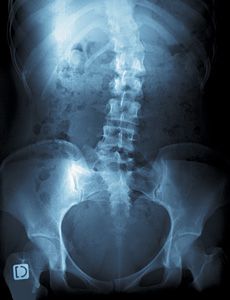Research Proves That Flu Shots Are Medically Useless
October 21, 2012
Member of the Pastoral Medical Association
Have you been waiting in line to get that needle full of Animal DNA, Human Fetal Tissue From Abortions, Mercury Formaldehyde and many more lovely, life improving ingredients?
Well you may want to read this post first….
A recent study out of the University of Minnesota (UM) suggests that it isn’t necessary, having found that the two groups most at risk from developing serious complications from the flu, seniors and children, derive little or no benefit from getting flu shots.
Michael Osterholm from the UM Center for Infectious Disease Research and Policy analyzed more than 12,000 peer-reviewed studies, documents, transcripts, and notes dating back to the 1930s, and found that there was very little solid evidence that the flu shot provides any real protection for most people.
"We found that current influenza vaccine protection is substantially lower than for most routine recommended vaccines and is suboptimal…we can no longer accept the status quo regarding vaccine research and development." said Osterholm about the findings.”
In Osterholm's opinion, a flu shot should ideally be between 85 and 95 percent effective in all age groups before ever being considered effective and useful. This means that the types of flu shots currently administered to hundreds of millions of Americans every single year are COMPLETE MEDICAL QUACKERY.
Yet even this researcher manipulates the numbers to get results. (Can You Say Unethical?!?!), He claims efficacy in 60% of those vaccinated, but the facts tell otherwise, as do his own numbers.
When taken in the light of the research that was used for this studies' research, the efficacy associated with influenza vaccine is negligible at best.
In a major study published in Lancet 2011, which involved 13,095 non-vaccinated adults who were monitored to see if they caught influenza, which 357 of them did, in fact, contract influenza resulting in 2.7% infection rate.
The vaccinated group, on the other hand, had an overall infection rate of 1.2%.
So even if you believe this study, and even if you believe all the pro-vaccine hype behind it, the truly "scientific" conclusion from this is rather astonishing:
Flu vaccines only prevent the flu in 1.5 out of every 100 adults injected with the vaccine!So where does this "60% effective" come from?
This is know as “Statistical Manipulation",and it's an old statistical trick that the vaccine industry (and the pharmaceutical industry) uses over and over again to trick people into thinking their useless drugs actually work.
First, you take the 2.7% in the control group who got the flu, and you divide that into the 1.2% in the treatment group who got the flu. This gives you roughly 0.45.
You can then say that 0.45 is "45% of 2.7," and claim that the vaccine therefore results in a "60% decrease" in influenza infections. This then becomes a "60% effectiveness rate" claim.
The overall "60% effectiveness" being claimed from this study comes from adding additional data about vaccine efficacy for children, which returned higher numbers than adults.
There were other problems with the data for children, however, including one study that showed an increase in influenza rates in the second year after the flu shot.
So when the media (or your doctor, or pharmacist, or CDC official) says these vaccines are "60% effective," this, to the average person, means that of 100 vaccinated people, 60 of them will not get the flu.
However, as you have seen, this is not the case, if you were to 100 adults then 1.5 of them would avoid getting the flu.
In other words, to prevent 60people from getting the flu a total of 4,000 people would have to be immunized!
Or, put another way, flu vaccines do nothing in 98.5% of adults.
But you've probably already noticed that the mainstream media won't dare print this statistical revelation. They would much rather mislead everybody into the utterly false and ridiculous belief that flu vaccines are "60% effective," whatever that means.
As for children and flu shots, well the evidence is lacking at best and what is spewed by those that profit from these vaccines is just parroted from what they have been told or seen, because if they would just read some research they would know things such as: A systematic review of 51 studies involving 260,000 children age 6 to 23 months found no evidence that the flu vaccine is any more effective than a placebo (Cochrane Database Syst Rev. 2006;1:CD004879).
How To “Cook The Books” With Statistics!
This little statistical lying technique is very popular in the cancerindustry, too, where these "relative numbers" are used to lie about all sorts of drugs. You may have heard, for example, that a breast cancer drug is "50% effective at preventing breast cancer!"
But what does that really mean? It could mean that 2 women out of 100 got breast cancer in the control group, and only 1 woman out of 100 got it in the treatment group. Thus, the drug is only shown to work on 1 out of 100 women.
But since 1 is 50% of 2, they will spin the store and claim a "50% breast cancer prevention rate!"
And most consumers will buy into this because they don't understand how the medical industry lies with these statistics. So they will think to themselves, "Wow, if I take this medication, there is a 50% chance this will prevent breast cancer for me!"
And yet that's utterly false. In fact, there is only a 1% chance it will prevent breast cancer for you, according to the study.
Real Protection From The Flu…
Become Pro-Active with your health! Eat more organic fruits and vegetables, especially green leafy veggies, supplement with garlic, colloidal silver, plenty of B vitamins, get plenty of good quality sleep every night and drink plenty of purified, mineral-rich water.
These are just some of the highly effective ways to naturally avoid the flu without risking potentially deadly side effects.
-->
-->
Research Proves That Flu Shots Are Medically Useless
October 21, 2012
Member of the Pastoral Medical Association
Have you been waiting in line to get that needle full of Animal DNA, Human Fetal Tissue From Abortions, Mercury Formaldehyde and many more lovely, life improving ingredients?
Well you may want to read this post first….
A recent study out of the University of Minnesota (UM) suggests that it isn’t necessary, having found that the two groups most at risk from developing serious complications from the flu, seniors and children, derive little or no benefit from getting flu shots.
Michael Osterholm from the UM Center for Infectious Disease Research and Policy analyzed more than 12,000 peer-reviewed studies, documents, transcripts, and notes dating back to the 1930s, and found that there was very little solid evidence that the flu shot provides any real protection for most people.
"We found that current influenza vaccine protection is substantially lower than for most routine recommended vaccines and is suboptimal…we can no longer accept the status quo regarding vaccine research and development." said Osterholm about the findings.”
In Osterholm's opinion, a flu shot should ideally be between 85 and 95 percent effective in all age groups before ever being considered effective and useful. This means that the types of flu shots currently administered to hundreds of millions of Americans every single year are COMPLETE MEDICAL QUACKERY.
Yet even this researcher manipulates the numbers to get results. (Can You Say Unethical?!?!), He claims efficacy in 60% of those vaccinated, but the facts tell otherwise, as do his own numbers.
When taken in the light of the research that was used for this studies' research, the efficacy associated with influenza vaccine is negligible at best.
In a major study published in Lancet 2011, which involved 13,095 non-vaccinated adults who were monitored to see if they caught influenza, which 357 of them did, in fact, contract influenza resulting in 2.7% infection rate.
The vaccinated group, on the other hand, had an overall infection rate of 1.2%.
So even if you believe this study, and even if you believe all the pro-vaccine hype behind it, the truly "scientific" conclusion from this is rather astonishing:
Flu vaccines only prevent the flu in 1.5 out of every 100 adults injected with the vaccine!So where does this "60% effective" come from?
This is know as “Statistical Manipulation",and it's an old statistical trick that the vaccine industry (and the pharmaceutical industry) uses over and over again to trick people into thinking their useless drugs actually work.
First, you take the 2.7% in the control group who got the flu, and you divide that into the 1.2% in the treatment group who got the flu. This gives you roughly 0.45.
You can then say that 0.45 is "45% of 2.7," and claim that the vaccine therefore results in a "60% decrease" in influenza infections. This then becomes a "60% effectiveness rate" claim.
The overall "60% effectiveness" being claimed from this study comes from adding additional data about vaccine efficacy for children, which returned higher numbers than adults.
There were other problems with the data for children, however, including one study that showed an increase in influenza rates in the second year after the flu shot.
So when the media (or your doctor, or pharmacist, or CDC official) says these vaccines are "60% effective," this, to the average person, means that of 100 vaccinated people, 60 of them will not get the flu.
However, as you have seen, this is not the case, if you were to 100 adults then 1.5 of them would avoid getting the flu.
In other words, to prevent 60people from getting the flu a total of 4,000 people would have to be immunized!
Or, put another way, flu vaccines do nothing in 98.5% of adults.
But you've probably already noticed that the mainstream media won't dare print this statistical revelation. They would much rather mislead everybody into the utterly false and ridiculous belief that flu vaccines are "60% effective," whatever that means.
As for children and flu shots, well the evidence is lacking at best and what is spewed by those that profit from these vaccines is just parroted from what they have been told or seen, because if they would just read some research they would know things such as: A systematic review of 51 studies involving 260,000 children age 6 to 23 months found no evidence that the flu vaccine is any more effective than a placebo (Cochrane Database Syst Rev. 2006;1:CD004879).
How To “Cook The Books” With Statistics!
This little statistical lying technique is very popular in the cancerindustry, too, where these "relative numbers" are used to lie about all sorts of drugs. You may have heard, for example, that a breast cancer drug is "50% effective at preventing breast cancer!"
But what does that really mean? It could mean that 2 women out of 100 got breast cancer in the control group, and only 1 woman out of 100 got it in the treatment group. Thus, the drug is only shown to work on 1 out of 100 women.
But since 1 is 50% of 2, they will spin the store and claim a "50% breast cancer prevention rate!"
And most consumers will buy into this because they don't understand how the medical industry lies with these statistics. So they will think to themselves, "Wow, if I take this medication, there is a 50% chance this will prevent breast cancer for me!"
And yet that's utterly false. In fact, there is only a 1% chance it will prevent breast cancer for you, according to the study.
Real Protection From The Flu…
Become Pro-Active with your health! Eat more organic fruits and vegetables, especially green leafy veggies, supplement with garlic, colloidal silver, plenty of B vitamins, get plenty of good quality sleep every night and drink plenty of purified, mineral-rich water.
These are just some of the highly effective ways to naturally avoid the flu without risking potentially deadly side effects.
-->
-->
Read More












